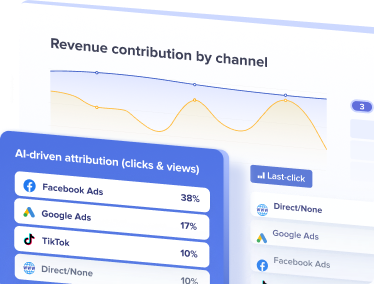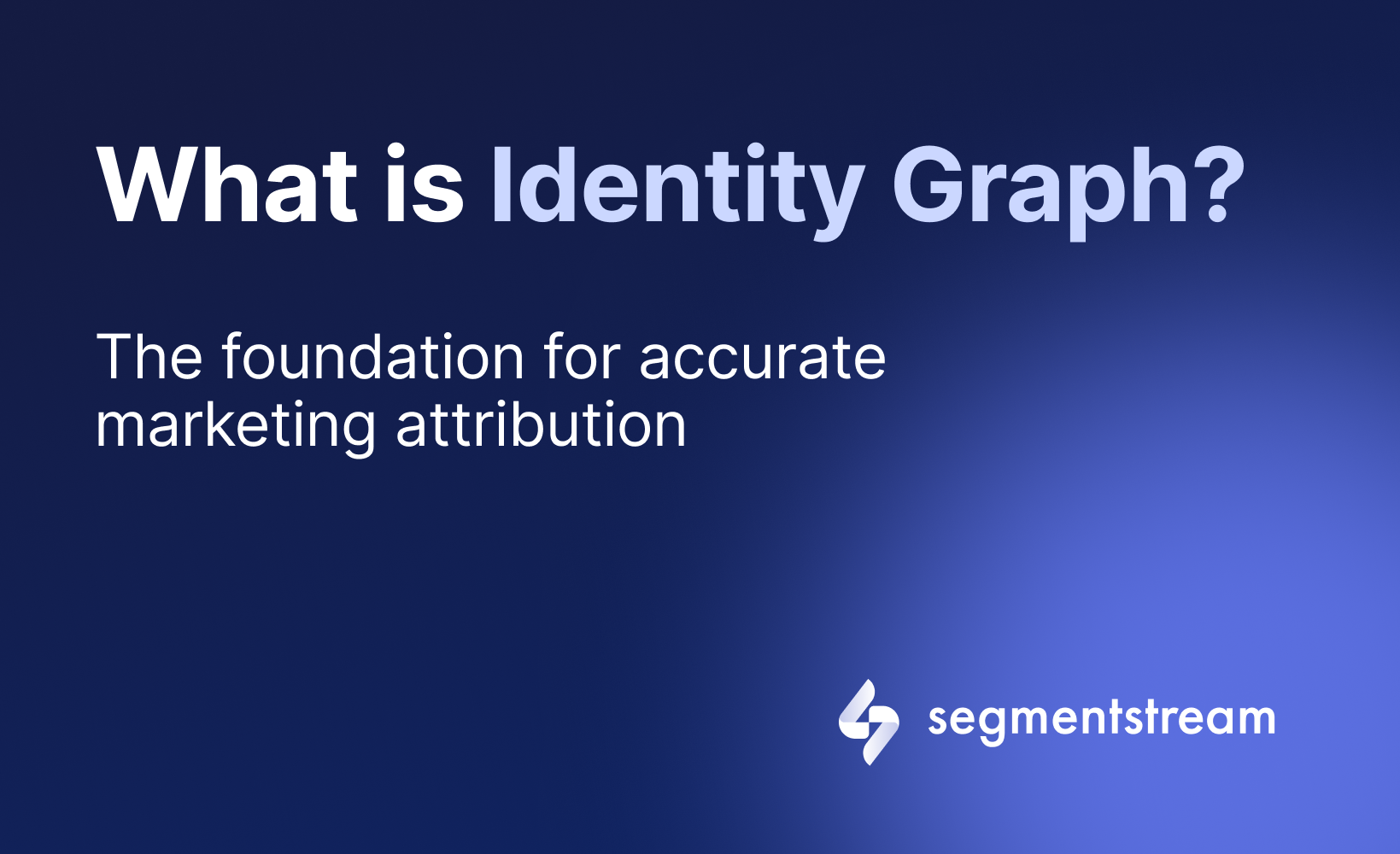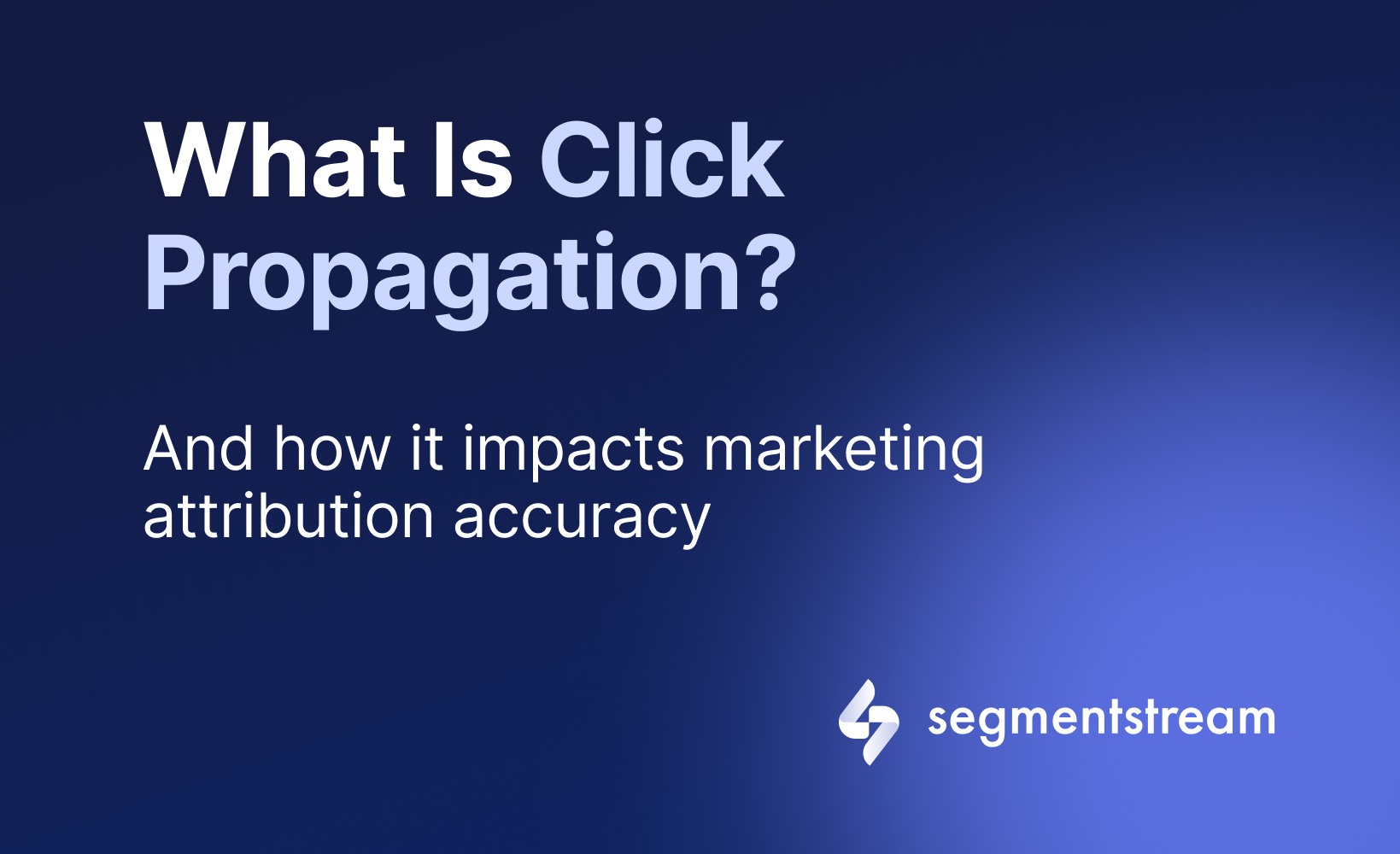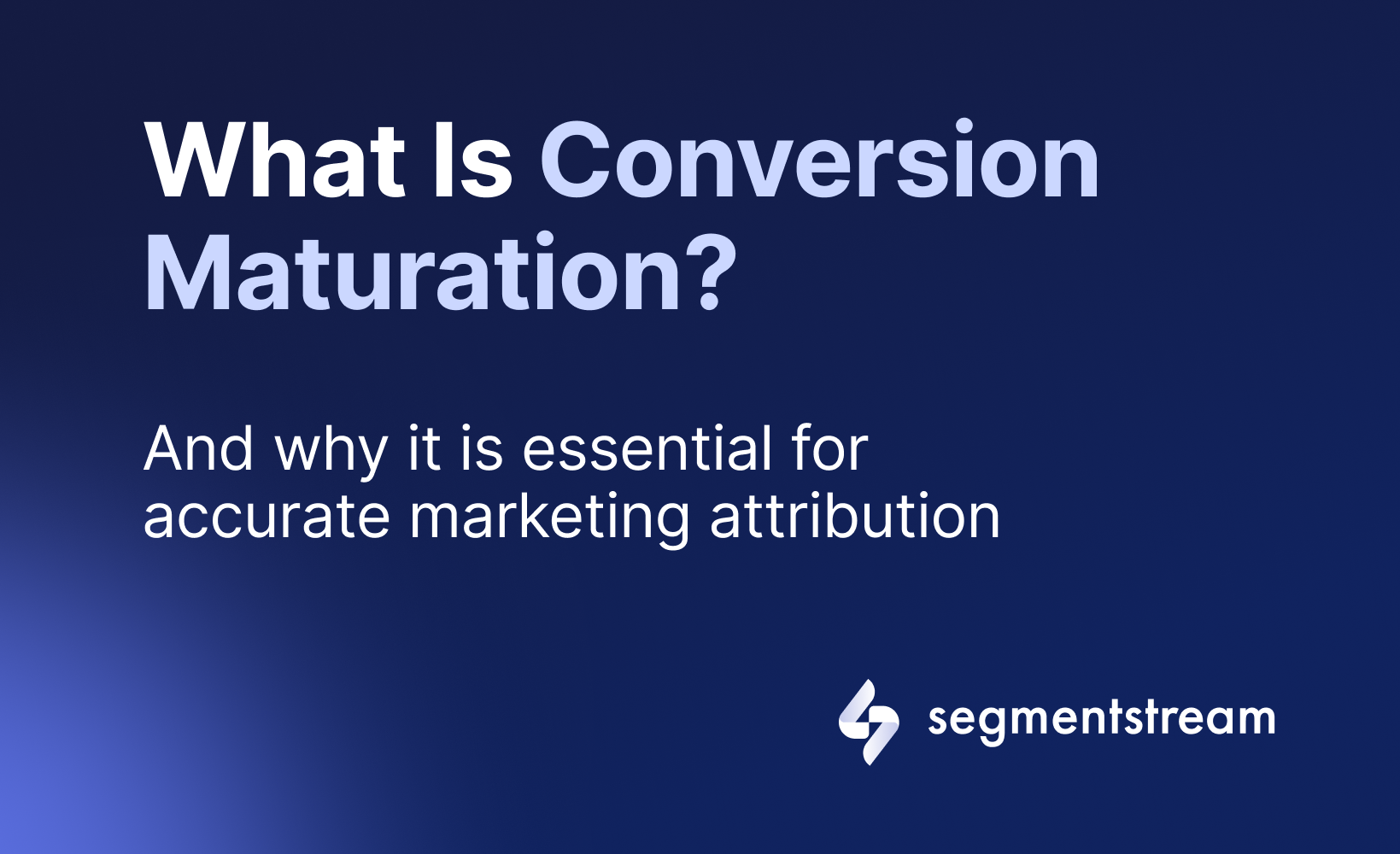
6 emerging trends in marketing attribution in 2025

The digital marketing landscape is changing drastically due to a number of factors. Cookie limitations and tracking restrictions are the number-one factors that motivate the industry to develop and find new ways to ensure that proper marketing measurement and attribution are still possible.
In this article, we’ll review the top 6 marketing attribution trends.
Top 6 trends in marketing attribution and measurement
Marketing attribution is a crucial process that helps businesses to understand which marketing channels, campaigns, and touchpoints are contributing the most to conversions. It involves identifying user actions that lead to a desired outcome, and then assigning value to each of these actions based on their contribution to the final conversion.
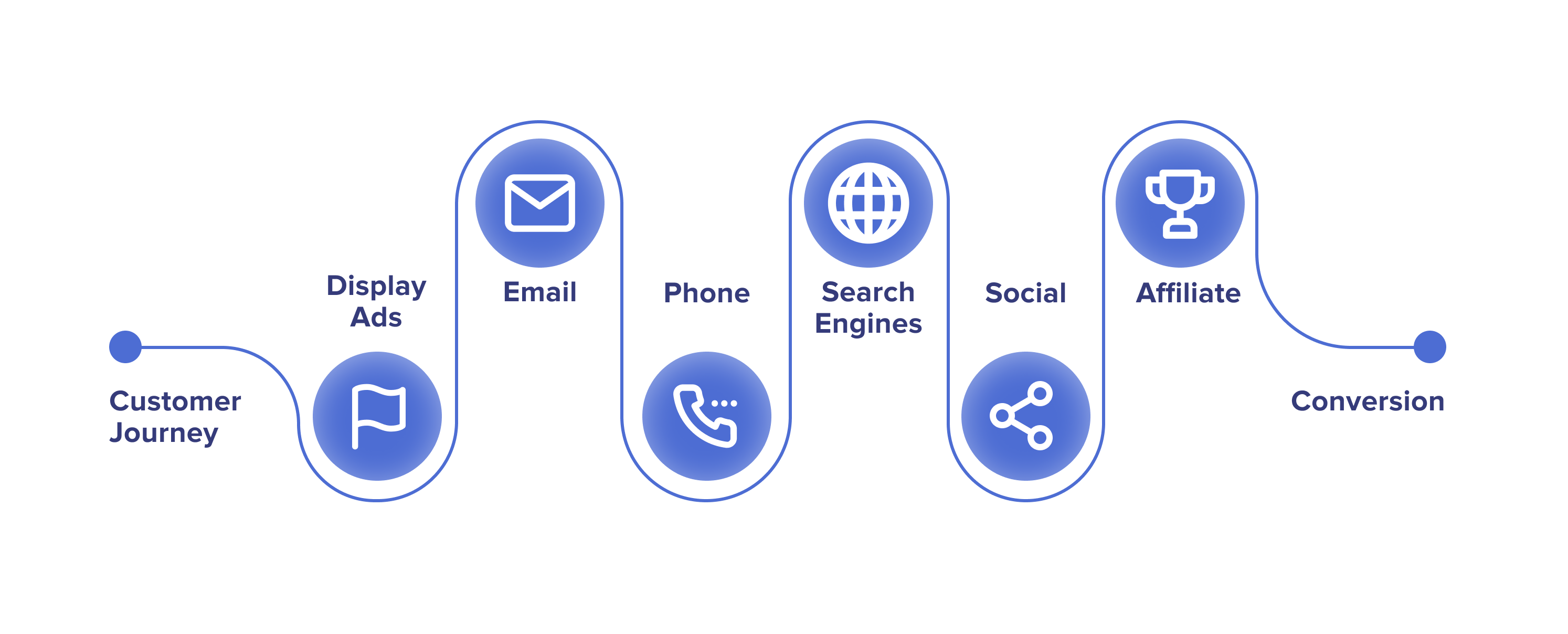 How a moders customer journey can look
How a moders customer journey can look
We’ll see a lot of emerging marketing attribution trends, but these six are the most valuable ones for the industry. Let’s take a look at them to keep abreast.
Machine learning and AI in marketing attribution solutions
With the rise of a cookieless world, marketing attribution faces a new set of challenges that prevent it from showing adequate results. The increasing use of cookie restrictions and tracking limitations has made it difficult to accurately attribute conversions.
Firstly, observing the complete customer journey from the first touchpoint to the conversion is impossible in today’s privacy-focused digital environment. Even when trying to complete the same task, users often switch between devices, which makes it impossible to assign fair credit to the initial touchpoints. As a result, these touchpoints are usually highly undervalued, and all credit goes to closing channels.

Secondly, in recent years, browsers like Safari, Chrome, and Firefox have introduced new features and technologies to protect user privacy by limiting the lifespan and amount of data that a first-party cookie can store on a user’s device. This prevents long-term tracking of users’ browsing activities.
In this context, Machine Learning and AI-based solutions have emerged as a key trend in marketing attribution and measurement. By using Machine Learning algorithms, businesses can overcome tracking challenges and accurately attribute value to marketing campaigns and channels.
AI-based tools like SegmentStream find correlation between ad spend, clicks, website visits (incl. user behaviour) and total sales in the same region/country. This way, SegmentStream measures true contribution of each channel and campaign on total revenue, even when conversions cannot be directly attributed using cookies.
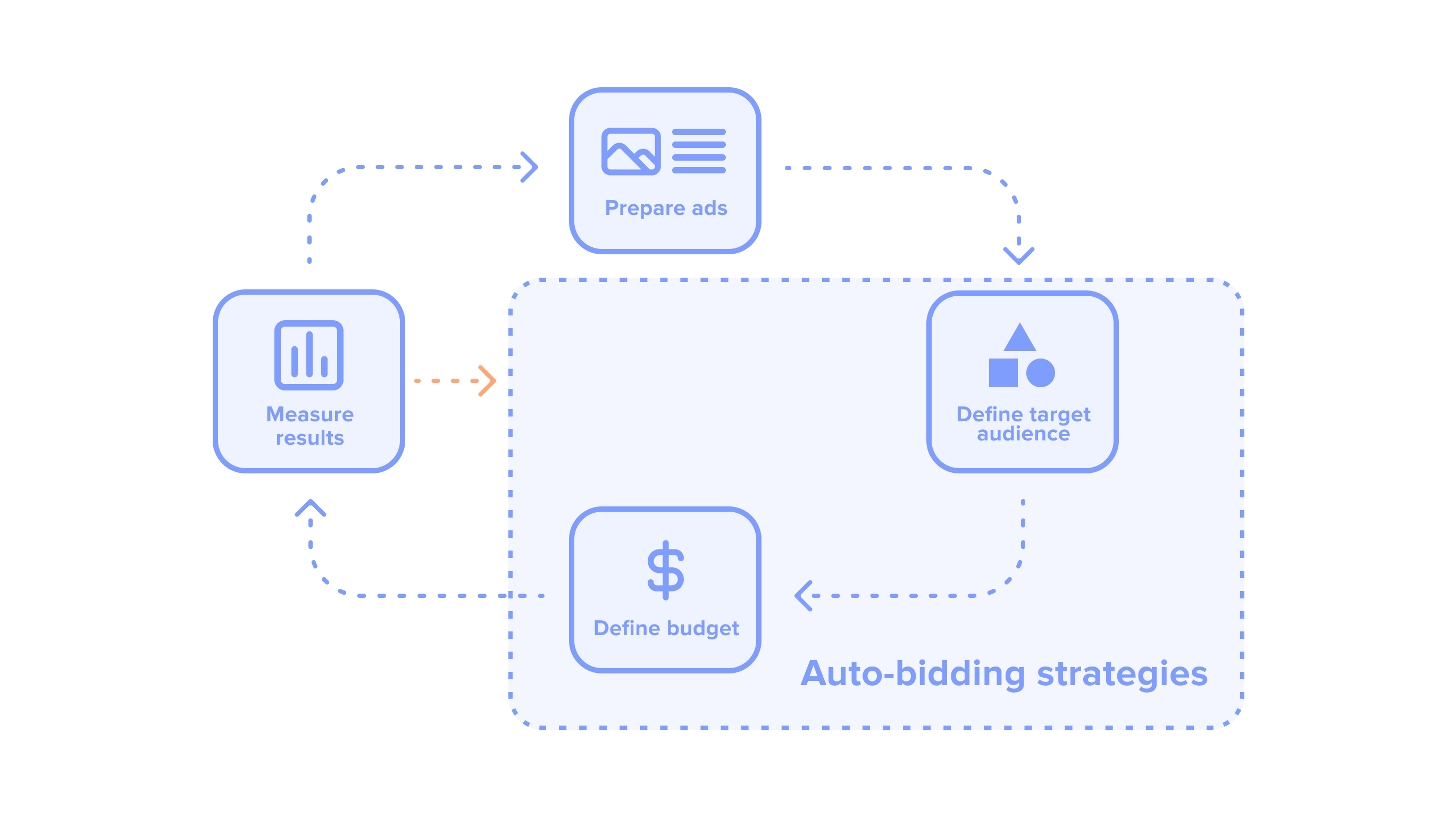
Overall, Machine Learning and AI are a huge trend in digital attribution. These technologies do tons of work under the hood to compensate for the unavailability of tracking data. As a result, overall AI-based attribution tools produce better results than traditional ones do.
View-through attribution
Traditional attribution models miss the impact of brand awareness, focusing only on final actions.
As a result, upper-funnel campaigns and more visual-focused channels like Social or Video are heavily undervalued. That’s why solutions like SegmentStream’s attribution are emerging to credit marketing efforts even without a direct click.
Watch the use case to learn more.
Focus on the quality of marketing data
Another important digital attribution trend is the attention to the quality of marketing data. As tracking restrictions and cookie use regulations become more prevalent, the quality of data obtained for marketing analysis may be compromised.
As you already know, attribution tools may provide inadequate information — they undervalue opening channels and overvalue closing ones since the whole customer journey cannot be observed, and the final conversion rarely happens within the same cookie.
Poor input data translates to poor marketing analysis results, which could lead to inaccurate budget allocation decisions. For instance, if analytics tools indicate that Facebook Ads generate few conversions, marketers may cut budgets on this channel despite it having a significant impact on buying decisions.
To support this trend on a journey to quality data and precise analytics, SegmentStream offers its help. With the use of ML algorithms, it analyses a wide range of data: from clicks, impressions, and costs to user behaviour. This way, there’s no need to try to observe the whole customer journey and stitch all touchpoints together. Marketers receive adequate data on the go which they can use for proper budget allocation and decision-making.
With this trend growing strong, we’ll see how marketers finally find a way to receive quality marketing data despite all data regulations.
Constantly addressing the ongoing changes in privacy
Living in a cookieless world, marketers have no other choice but to find ways to address all challenges related to data regulations and tracking restrictions. Looking for alternatives and ways to overcome these limitations is also a huge marketing attribution trend.
The Internet is developing and users want to have a more privacy-centric experience on the web. As a result, companies like Apple, Mozilla, and Google have taken steps to protect user privacy by introducing new features and technologies.
Most browsers limit the lifespan of first-party cookies to a certain period, typically around 7-30 days, after which they expire and get deleted automatically. This is to prevent long-term tracking of users’ browsing activities and protect their privacy. For example, Safari sets a default lifespan of 7 days for all first-party cookies, while Chrome and Firefox allow cookies to persist for up to 30 days by default.
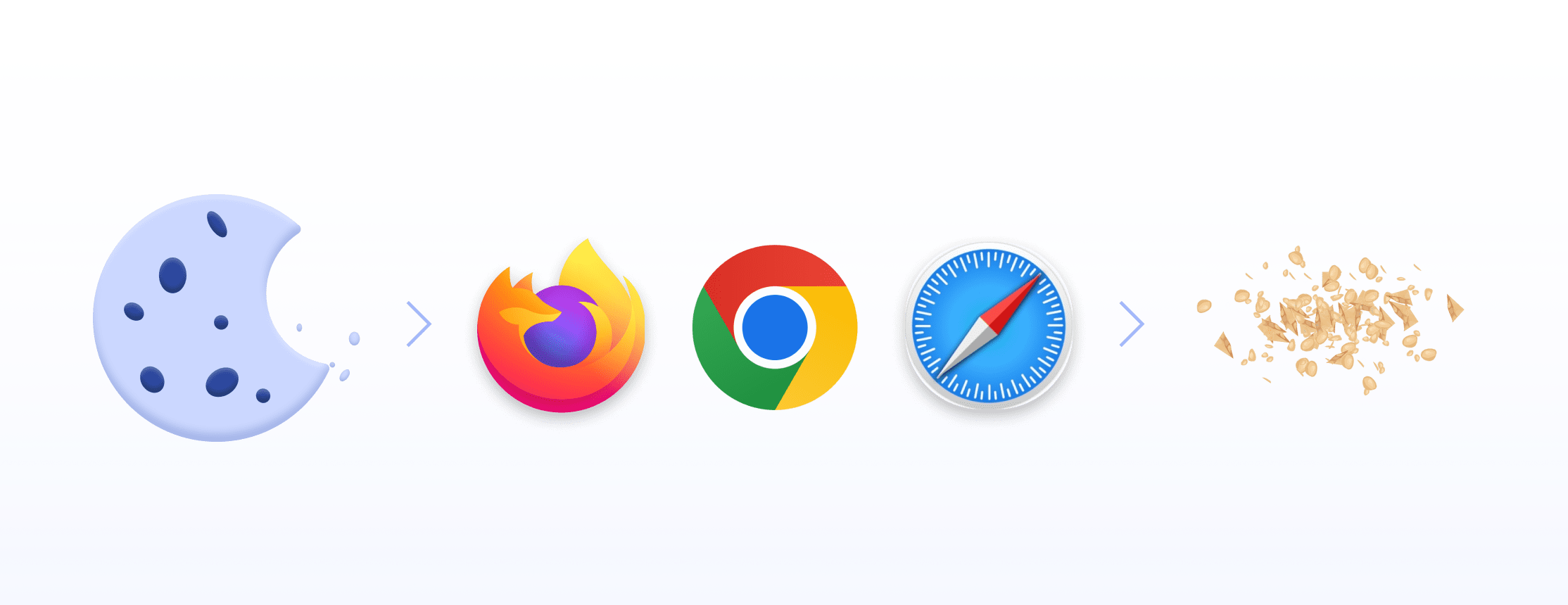
As tracking restrictions and cookie use limitations continue to evolve, marketers need to adapt their strategies accordingly. One of the ways is to try alternative approaches to attribution, such as SegmentStream provides.
SegmentStream moves away from user-level analytics to analyze how digital advertising affects revenue in specific regions or cities.
Using first-party data and machine learning, it provides a clearer picture of the impact of paid media on sales, moving beyond the cookie-dependent limitations of traditional methods.
Moving from retrospective towards predictive analytics
Another noticeable trend is that marketers switch from retrospective analytics to predictive analytics more often.
As privacy regulations become increasingly strict and data collection becomes more challenging, marketers are starting to shift from retrospective analytics and attribution approaches to predictive analytics tools, such as Conversion Modeling. Let’s compare the most popular predictive analytics approaches to it.
Multi-touch Attribution (MTA) models, which determine and assign the value of each touchpoint on the journey to conversion, have been limited by the inability to observe the whole customer journey. This results in imprecise data and an incomplete understanding of strategic decisions.
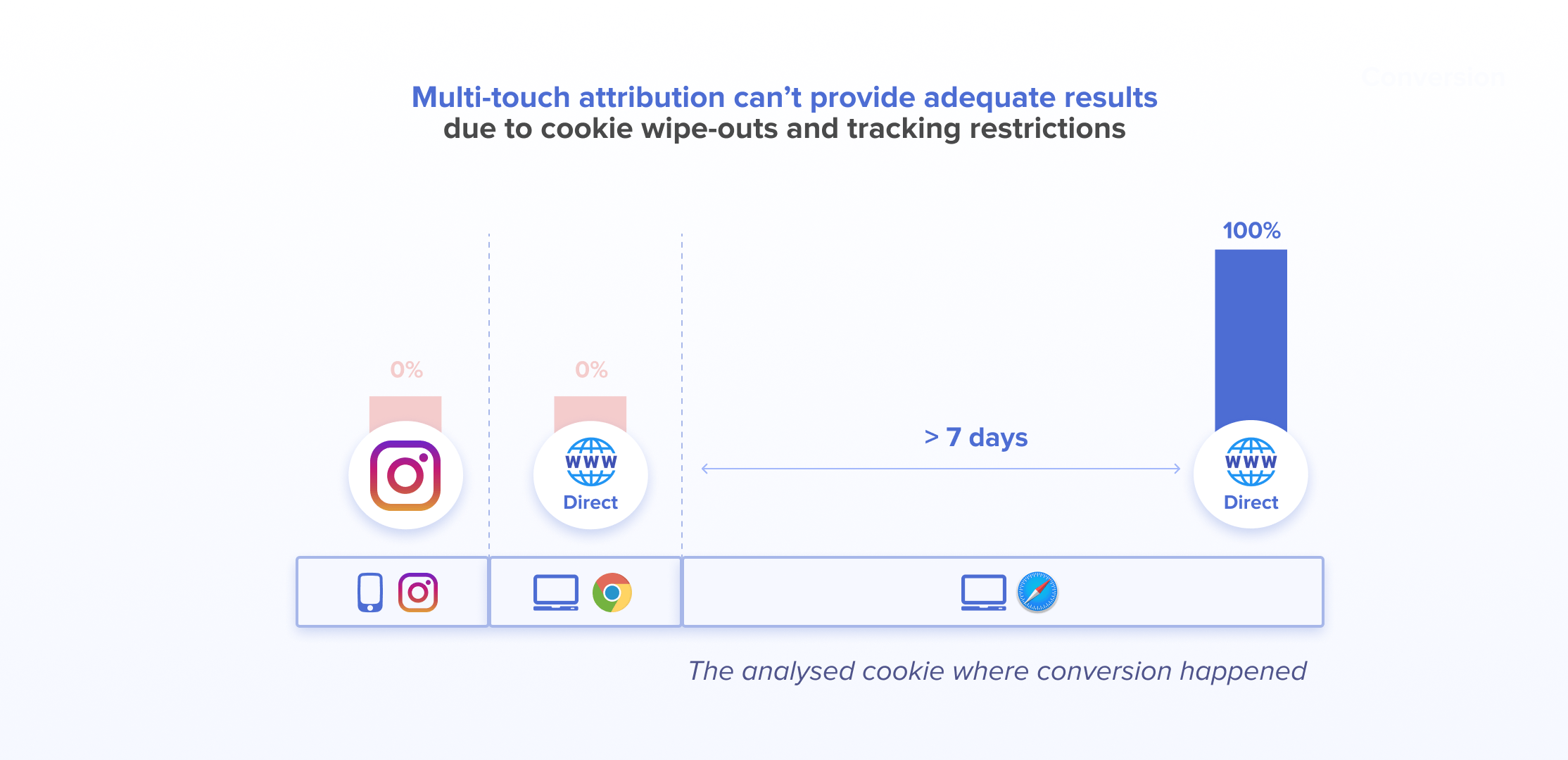
Similarly, Incrementality Testing, which measures the incremental value of a marketing strategy through A/B testing, heavily relies on cookies and requires that the whole journey including the conversion happen within the same cookie, which is impossible now. If this condition isn’t met, the approach can’t provide fair measurement results, and the experiment’s accuracy is limited.
Marketing Mix Modelling (MMM) is useful for retrospective analysis, assessing all budget allocations into digital and offline marketing channels and their performance. However, MMM’s applications are limited to just a few situations, and they cannot help assess the impact of marketing activities on the go or a micro-level.
On the other hand, SegmentStream uses a predictive approach that relies on behaviour trends to not only measure but to optimize marketing performance with its AI Budget Recommendations.
Switching from underperforming retrospective tools to modern predictive ones is a huge step on a journey to adequate marketing measurement even in a cookieless world, and it’s great to see that more marketers are stepping on this path.
Focus on real-time analytics
Real-time analytics is becoming increasingly important for marketers to stay competitive in today’s digital landscape. Obtaining timely and fresh data can provide a significant advantage when making decisions such as budget allocation. This is a rising trend for marketing attribution, and it needs adequate tools to support it.
SegmentStream is that one tool that can assess the performance of all channels in real time. All website visits are assessed immediately, and marketers can analyse the performance of all channels right away. This way, for example, marketers can get insights on freshly launched campaigns or tackle a long sales cycle that exceeds attribution windows on ad platforms.
The bottom line
As the marketing landscape continues to evolve, it is becoming increasingly important to embrace new technologies and methodologies. All these processes could be observed by detecting the most prevalent trends in the marketing attribution and measurement industry.
The top 6 attribution and marketing measurement trends are:
- Rising demand for Machine Learning and AI technologies;
- Understanding what marketing attribution truly is and getting rid of the misconceptions;
- Focusing more on the quality of marketing data;
- Finding ways to address rising tracking restrictions and privacy regulations;
- Adopting predictive analytics tools instead of retrospective ones more often;
- Focusing on real-time analytics to gain competitive advantage.
By understanding the limitations of traditional approaches and embracing new ways of thinking, marketers can stay competitive and make data-driven decisions that will empower growth for the business in the future.
If you want to learn more about SegmentStream’s solutions for optimization or attribution - book a demo here.
Optimal marketing
Achieve the most optimal marketing mix with SegmentStream
Talk to expert